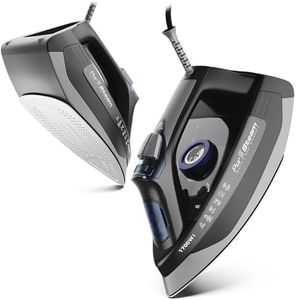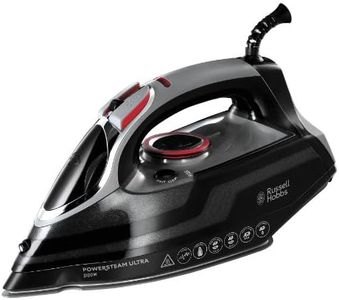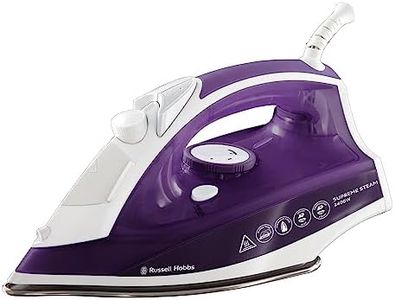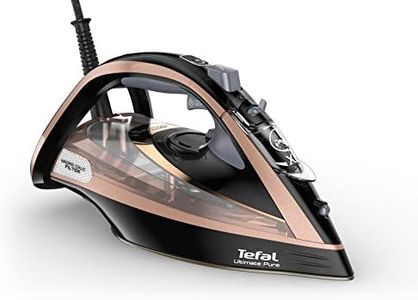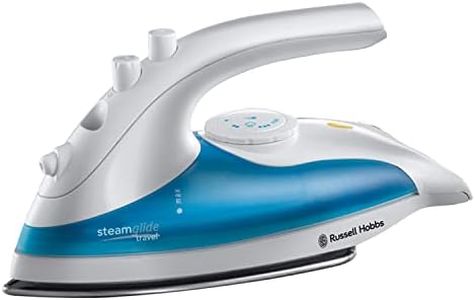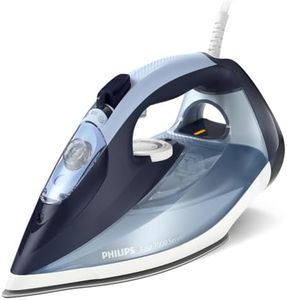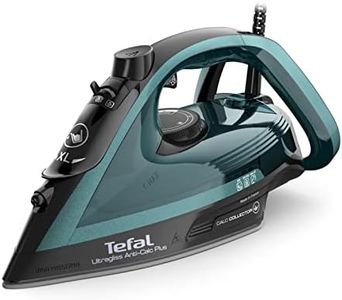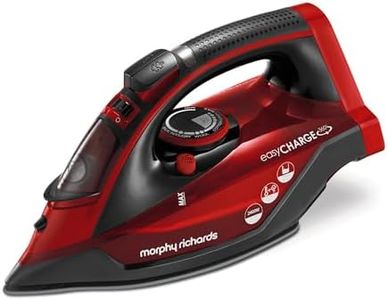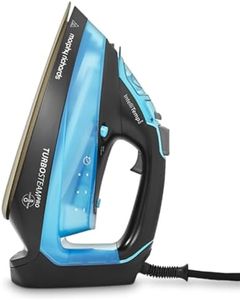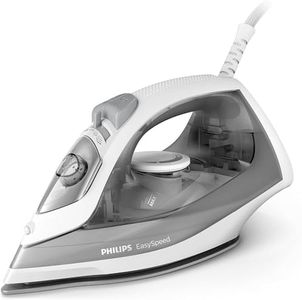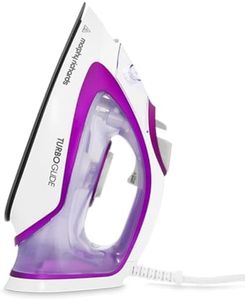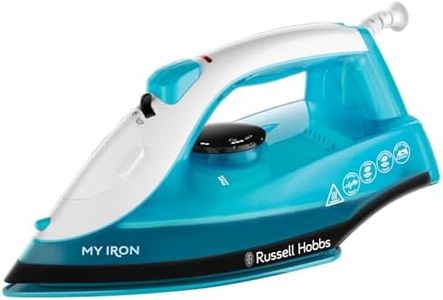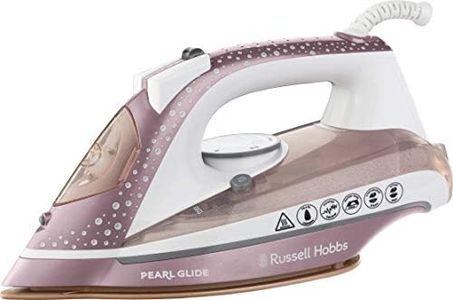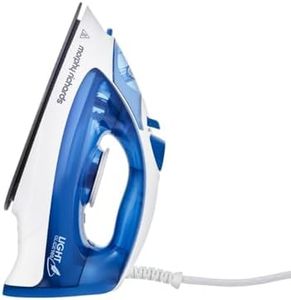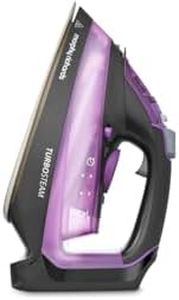We Use CookiesWe use cookies to enhance the security, performance,
functionality and for analytical and promotional activities. By continuing to browse this site you
are agreeing to our privacy policy
10 Best Lightweight Steam Irons
From leading brands and best sellers available on the web.Recommended lists
Buying Guide for the Best Lightweight Steam Irons
When choosing a lightweight steam iron, it's important to consider how often you'll be using it and what types of fabrics you'll be ironing. A lightweight steam iron can make the task of ironing less strenuous and more efficient, especially if you have a lot of clothes to press. The key is to find a balance between weight, steam output, and ease of use to ensure that your ironing experience is as smooth and effective as possible.WeightThe weight of a steam iron is crucial because it affects how easy it is to handle and maneuver. A lightweight iron is generally easier to use for extended periods, reducing arm fatigue. Typically, lightweight irons weigh between 1 to 3 pounds. If you have a lot of ironing to do or have mobility issues, opt for an iron on the lighter end of the spectrum. However, ensure it still has enough heft to press out wrinkles effectively.
Steam OutputSteam output is the amount of steam the iron produces, which helps to relax fabric fibers and remove wrinkles. This is measured in grams per minute (g/min). A higher steam output means more effective ironing, especially for heavy fabrics. For lightweight irons, look for a steam output of at least 20-30 g/min for general use. If you frequently iron thicker materials, consider a model with a higher steam output.
Soleplate MaterialThe soleplate is the flat surface of the iron that comes into contact with your clothes. Common materials include stainless steel, ceramic, and non-stick coatings. Stainless steel is durable and glides well, ceramic offers even heat distribution, and non-stick coatings prevent fabric from sticking. Choose a soleplate based on your ironing habits: if you iron a variety of fabrics, a ceramic or non-stick soleplate might be best for versatility.
Water Tank CapacityThe water tank capacity determines how long you can iron without needing to refill the tank. A larger tank means longer ironing sessions without interruption. Lightweight irons typically have smaller tanks, around 200-300 ml. If you iron frequently or large loads, consider a model with a larger tank to minimize refills. For occasional use, a smaller tank should suffice.
Temperature ControlTemperature control allows you to adjust the heat setting of the iron to suit different types of fabrics. This is important to prevent damage to delicate materials and ensure effective ironing of tougher fabrics. Look for an iron with a clear and easy-to-use temperature dial or digital controls. If you iron a wide range of fabrics, precise temperature control is essential to accommodate various fabric needs.
Cord Length and SwivelThe cord length and swivel feature affect the iron's maneuverability and ease of use. A longer cord allows more freedom of movement, which is useful if your ironing board is far from a power outlet. A swivel cord prevents tangling and makes it easier to iron in different directions. For convenience, look for a cord length of at least 8 feet and a 360-degree swivel feature.
